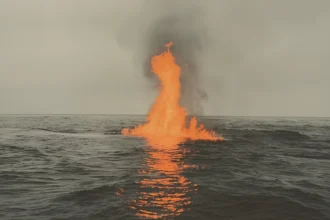Imagine if more than one-tenth of Earth’s ocean surface suddenly developed a dangerous fever. This is exactly what happened in 2024, according to new research from Reuters and the World Meteorological Organization.
Scientists discovered that massive areas of our oceans became dangerously hot, creating what experts call marine heat waves across 40 million square kilometers of water.
What Marine Heat Waves Really Mean
Think of marine heat waves like prolonged fevers in the ocean. Just as your body temperature rising above normal signals illness, ocean temperatures climbing significantly above typical levels create serious problems for sea life.
These heat waves happen when water stays much hotter than normal for at least five days straight. In 2024, temperatures averaged nearly half a degree Celsius higher than the typical range measured from 1991 to 2020.
The Southwest Pacific Under Threat
The crisis hit hardest in the Southwest Pacific region, affecting countries like Australia, New Zealand, Indonesia, and the Philippines. Blair Trewin from the WMO explained that “much of the region saw at least severe marine heat wave conditions at some point during the course of 2024.”
This region is particularly vulnerable because over half its population lives within 500 meters of the coast, making them directly exposed to rising sea levels and extreme weather.
Critical Threats Emerging
- Coral reef destruction: The extreme heat acts like boiling water for coral animals, killing entire reef systems that support countless marine species and protect coastlines from storms.
- Disappearing glacier: Indonesia’s last tropical glacier shrank by up to 50 percent in just one year, with researcher Thea Turkington warning it could vanish completely by 2026.
- Increased storm danger: Hotter oceans fuel more powerful cyclones, creating unprecedented numbers of dangerous storms that threaten coastal communities.
These changes represent clear evidence of climate change accelerating beyond previous predictions. As ocean temperatures continue rising faster than the global average, coastal communities face mounting challenges from both sea level rise and extreme weather events. Will 2025 bring even more severe marine heat waves?











